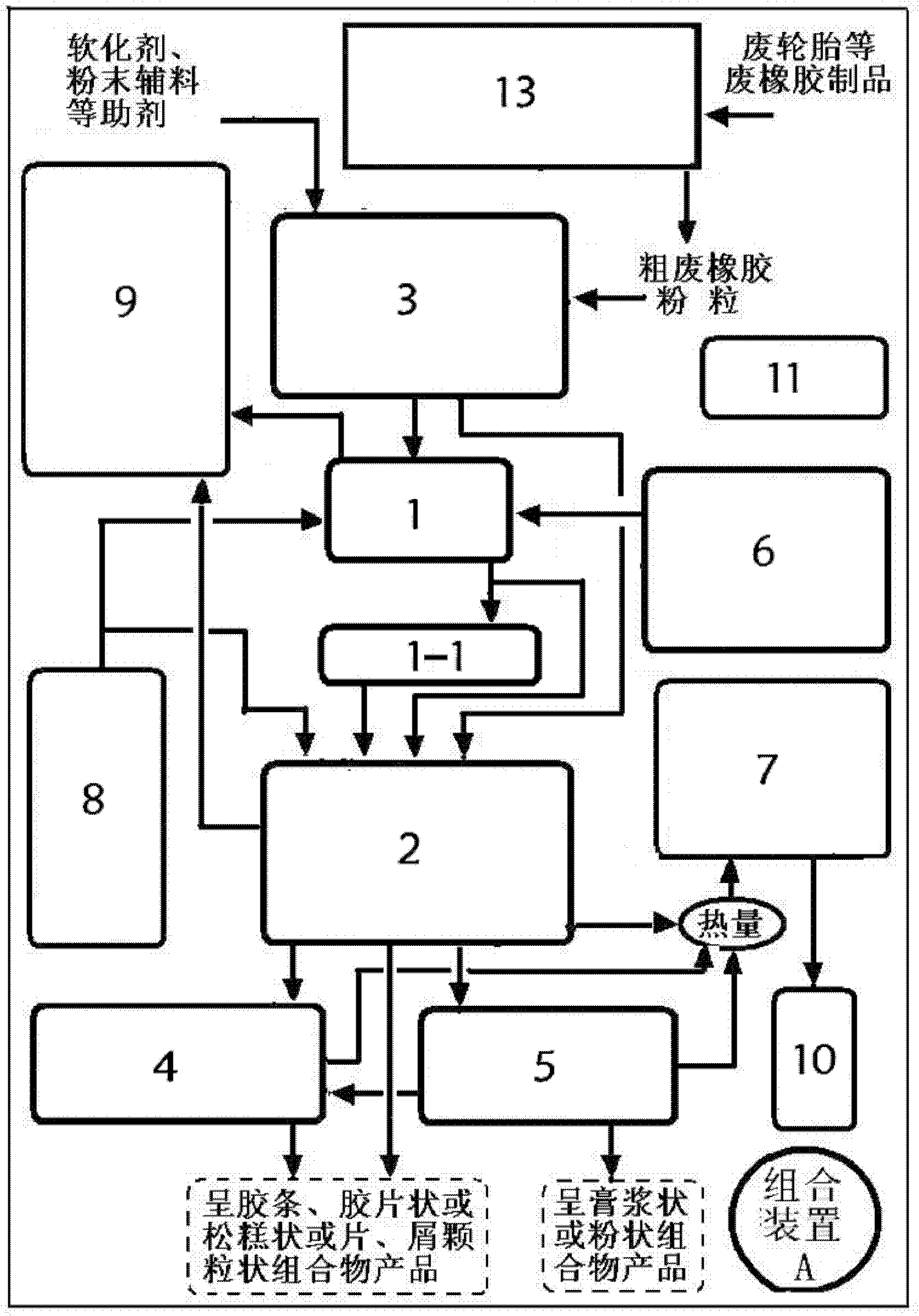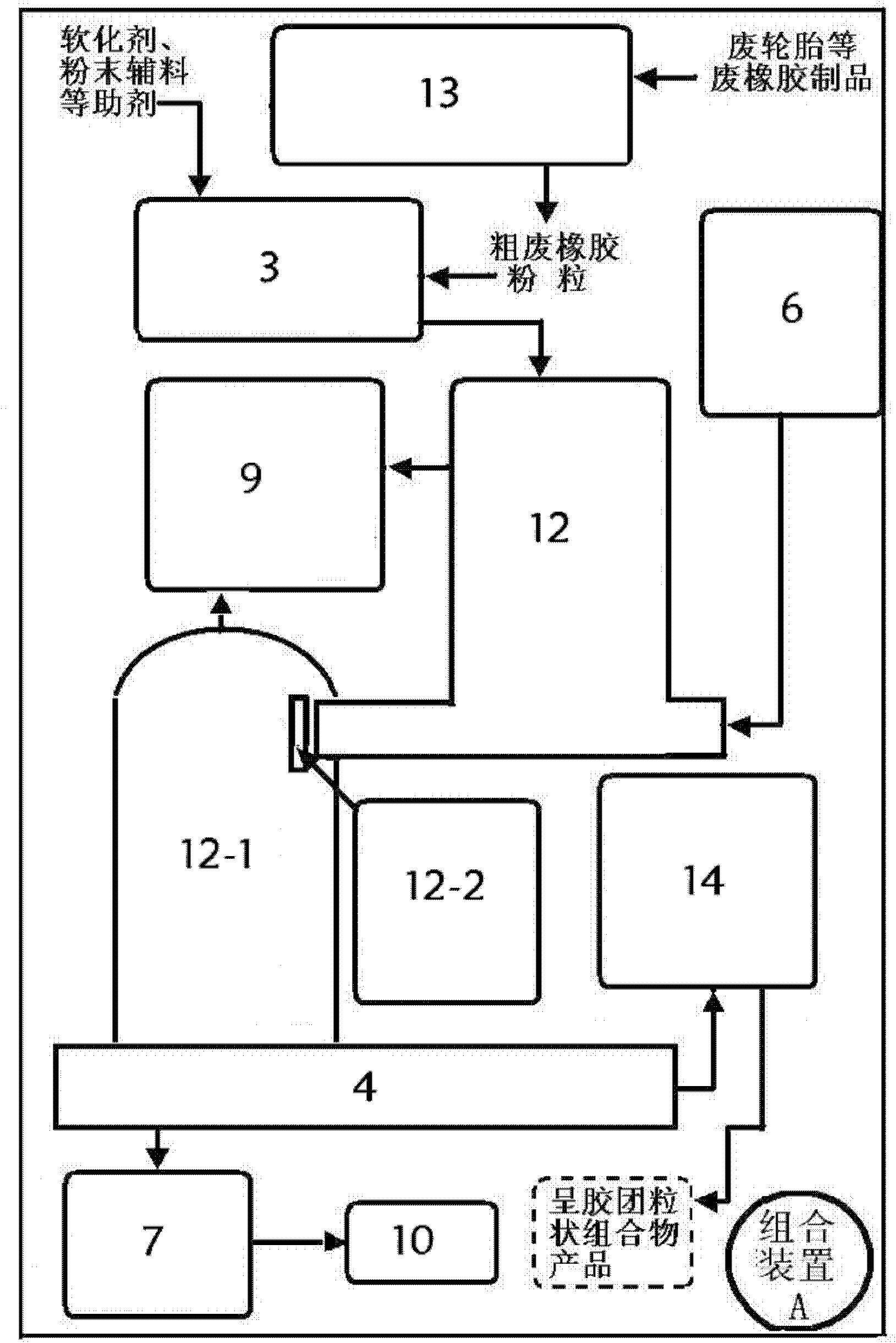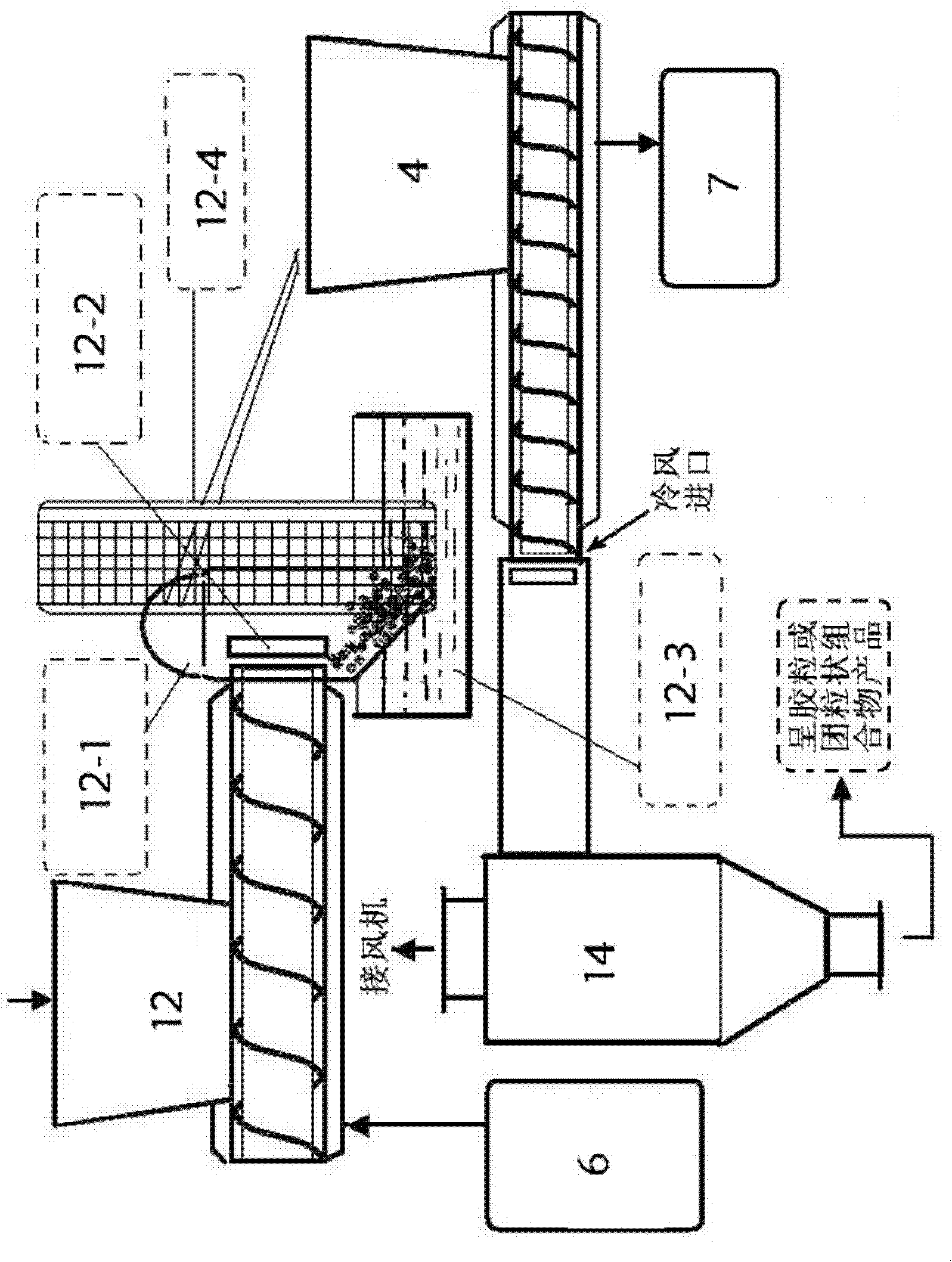Heat regeneration method for waste rubber
A thermal regeneration and waste rubber technology, applied in the preparation of liquid hydrocarbon mixture, treatment of hydrocarbon oil, petroleum industry, etc., can solve the environmental pollution of incoming and outgoing materials, the high price of environmentally friendly softeners, and the lack of regenerated rubber hydrocarbon composition products Evaluation plan and other issues to achieve the effect of improving processing efficiency
- Summary
- Abstract
- Description
- Claims
- Application Information
AI Technical Summary
Problems solved by technology
Method used
Image
Examples
Embodiment 1
[0164](1-1), preparation: get 100 parts by weight (hereinafter all referred to as "parts") of the waste tire top part rubber coarse powder that has been removed from fibers and steel wire impurities and pass through a 20-40 mesh sieve, and airtight operation can be adopted. Import the materials one by one into a closed stirring and heating tank, and first add some formulation aids such as softeners that meet environmental protection requirements. 15 parts of type rubber filler oil, 67 parts of No. 30 machine oil, 10 parts of paraffin, 28 parts of stearic acid; 3 parts of antioxidant, the variety used: 2,6-di-tert-butyl-p-cresol; 13 parts of water. The softener can be hot-mixed in advance, and then metered by a pump. The feeding sequence of waste rubber coarse powder and formulation additives can be reversed, especially water should be added first, so as to prevent hot tank burning. The weight ratio of the environmentally friendly softening agent in the formulation aid to the ...
Embodiment 2
[0171] (2-1), Preparation: Take 100 parts of the waste tire rubber coarse powder material that has been removed from fibers and steel wires and pass through a 20-40 mesh sieve, and introduce it into a closed stirring and heating tank, and first add a softener that meets environmental protection requirements and other part of the formulation aids, the first part of the formulation aids is added, which consists of: 32 parts of softener, specifically including: 10 parts of environmentally friendly rubber filler oil, 16 parts of No. 40 engine oil, 4 parts of paraffin, 2 parts of stearic acid 3 parts; 3 parts of antioxidant, the variety adopts: 2,6-di-tert-butyl-p-cresol; 13 parts of water. The feeding sequence of the waste rubber coarse powder and formula additives can be reversed. The weight ratio of the environmentally friendly softening agent in the formulation aid to the waste rubber coarse powder is 100 / 32. After the filling is completed, close the charging door, open the in...
Embodiment 3
[0177] (3-1), preparation: import 100 parts of coarse rubber pellets of waste butyl water tires of about 5 mesh into an airtight stirring heating tank, first add some formula auxiliary agents such as softeners that meet environmental protection requirements, and First add part of the formulation auxiliary, which is composed of: 55.5 parts of softener, specifically including: 26 parts of environment-friendly rubber filler oil, 10 parts of paraffin wax, 6.5 parts of microcrystalline wax, 13 parts of stearic acid; 13 parts of water. The feeding sequence of the waste rubber coarse powder and formula additives can be reversed. The weight ratio of the environmentally friendly softening agent in the formulation aid to the waste rubber coarse powder is 100 / 55.5. After the filling is completed, close the charging door, open the inlet and outlet valves, first use nitrogen to drive away the oxygen-containing air brought into the tank by filling and discharging the cylinder with nitrogen ...
PUM
 Login to View More
Login to View More Abstract
Description
Claims
Application Information
 Login to View More
Login to View More - R&D
- Intellectual Property
- Life Sciences
- Materials
- Tech Scout
- Unparalleled Data Quality
- Higher Quality Content
- 60% Fewer Hallucinations
Browse by: Latest US Patents, China's latest patents, Technical Efficacy Thesaurus, Application Domain, Technology Topic, Popular Technical Reports.
© 2025 PatSnap. All rights reserved.Legal|Privacy policy|Modern Slavery Act Transparency Statement|Sitemap|About US| Contact US: help@patsnap.com



